Forum Replies Created
-
AuthorPosts
-
February 20, 2024 at 10:03 am #15470
 DarenKeymaster
DarenKeymasterI haven’t opened one for years, but it will be like a standard melodica for tuning and cleaning. The screws will be in different places!
February 20, 2024 at 10:00 am #15469 DarenKeymaster
DarenKeymasterI might try this out!
February 20, 2024 at 10:00 am #15468 DarenKeymaster
DarenKeymasterThanks for this David, very interesting, looks great too
February 20, 2024 at 9:55 am #15467 DarenKeymaster
DarenKeymasterA tube should collect some of the condensation from the breath before it reaches the reeds, so could give you extra playing time before the reeds get saturated. It’s easy to empty out too.
The Vibrandoneons have a long rigid tube with a U bend where moisture collects, and there’s a little outlet pad where in theory you can release any moisture which builds up. Nice idea!
Larry – a long heated pipe might be a good addition to Dave Brancazio’s heated reed system
February 3, 2024 at 3:04 pm #15403 DarenKeymaster
DarenKeymasterBest to link from youtube
January 30, 2024 at 12:58 pm #15391 DarenKeymaster
DarenKeymasterPlease post the video, this is really interesting!
January 17, 2024 at 11:08 am #15365 DarenKeymaster
DarenKeymasterGood point about the springs Rob, most melodicas use the same springs on all keys, which results in uneven pressure, as there’s more leverage power in the white keys. For me this is just something to get used to.
Looking forward to your views on the Professional 36!
November 21, 2023 at 10:28 am #15187 DarenKeymaster
DarenKeymasterYou should find some good info in this long discussion here: https://melodicaworld.com/forums/topic/refinish-of-yamaha-p-32d/
November 21, 2023 at 10:26 am #15186 DarenKeymaster
DarenKeymasterI’ve bought many Yamaha melodicas from Ebay, sent from Japan to the UK with no problem
October 26, 2023 at 10:51 am #15159 DarenKeymaster
DarenKeymasterHi Rusty, I haven’t heard of a wooden Hohner button melodica. Could it be metal?
October 15, 2023 at 3:17 pm #15147 DarenKeymaster
DarenKeymasterA great work of art and science!
October 12, 2023 at 8:35 am #15139 DarenKeymaster
DarenKeymasterHey Stefan, thanks for your offer to translate! I’m not currently researching the mechanics of the clavietta, so I don’t have an immediate need to read the translation. But I’m sure I’ll want to come back to this in the future. It would also be a great resource for anyone else looking into it, possibly helping them with a project
So I vote for a translation!
October 4, 2023 at 8:58 am #15127 DarenKeymaster
DarenKeymasterHi Stefan, you might find this 1995 patent useful. I don’t speak German!
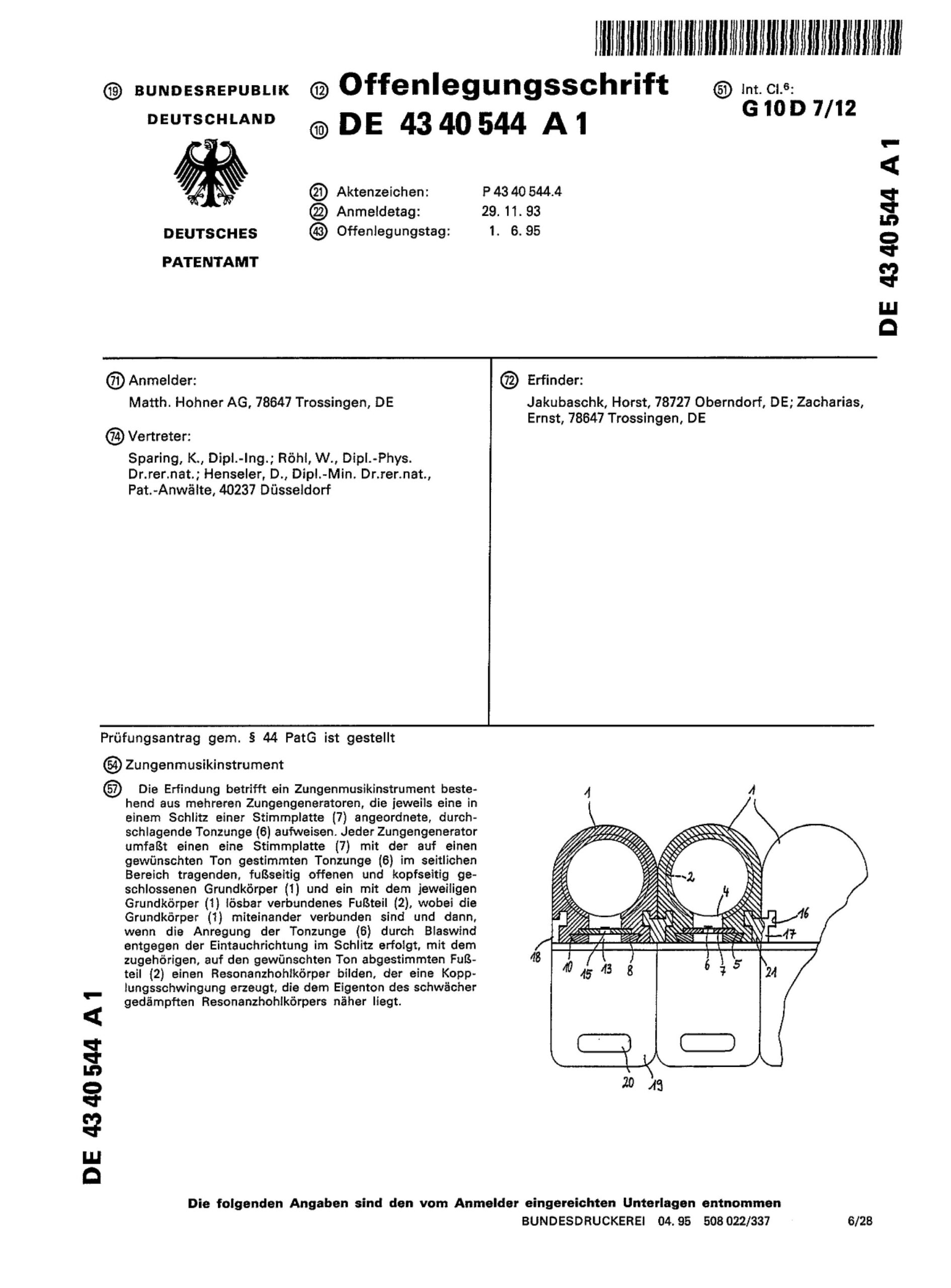
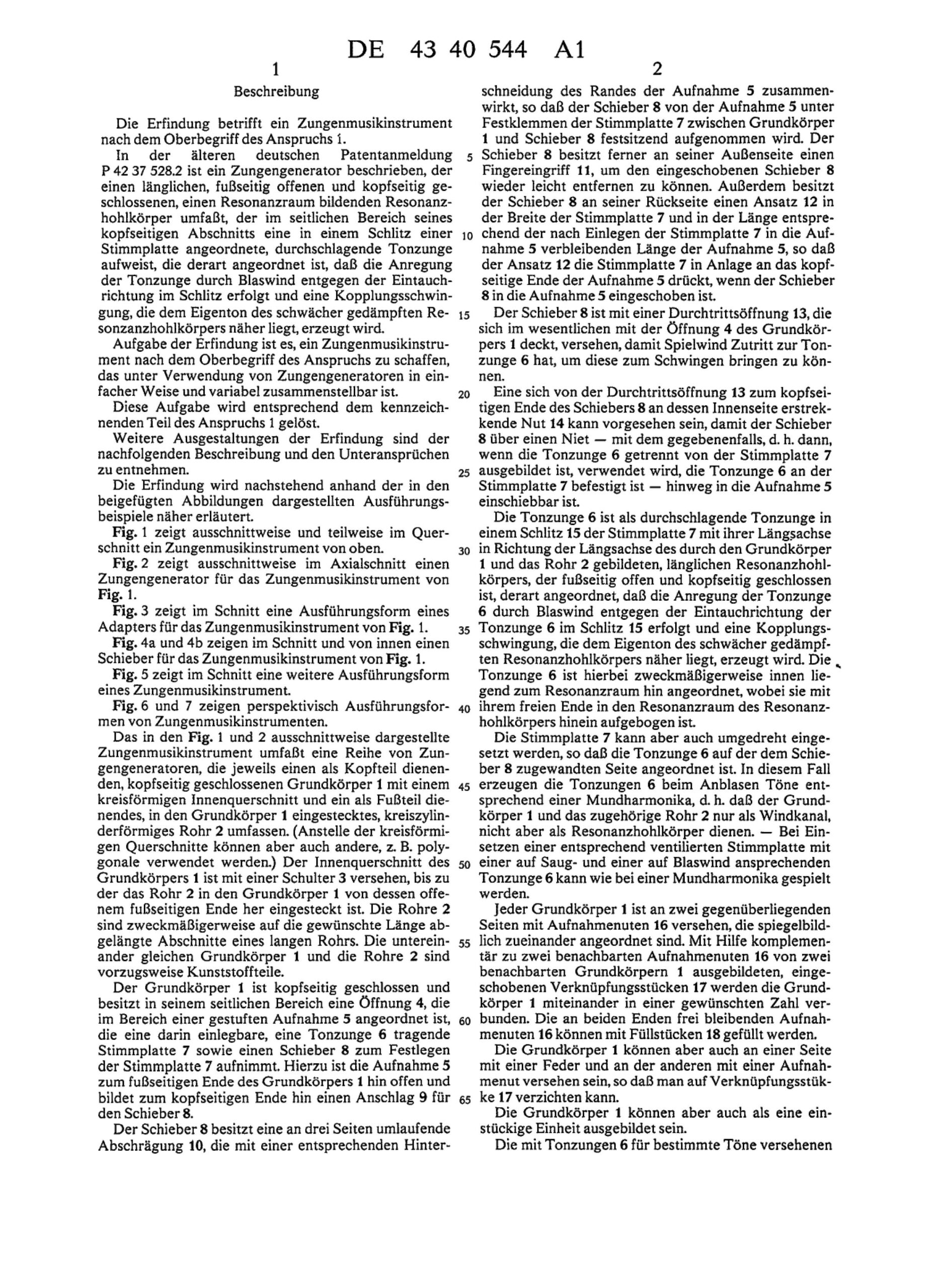
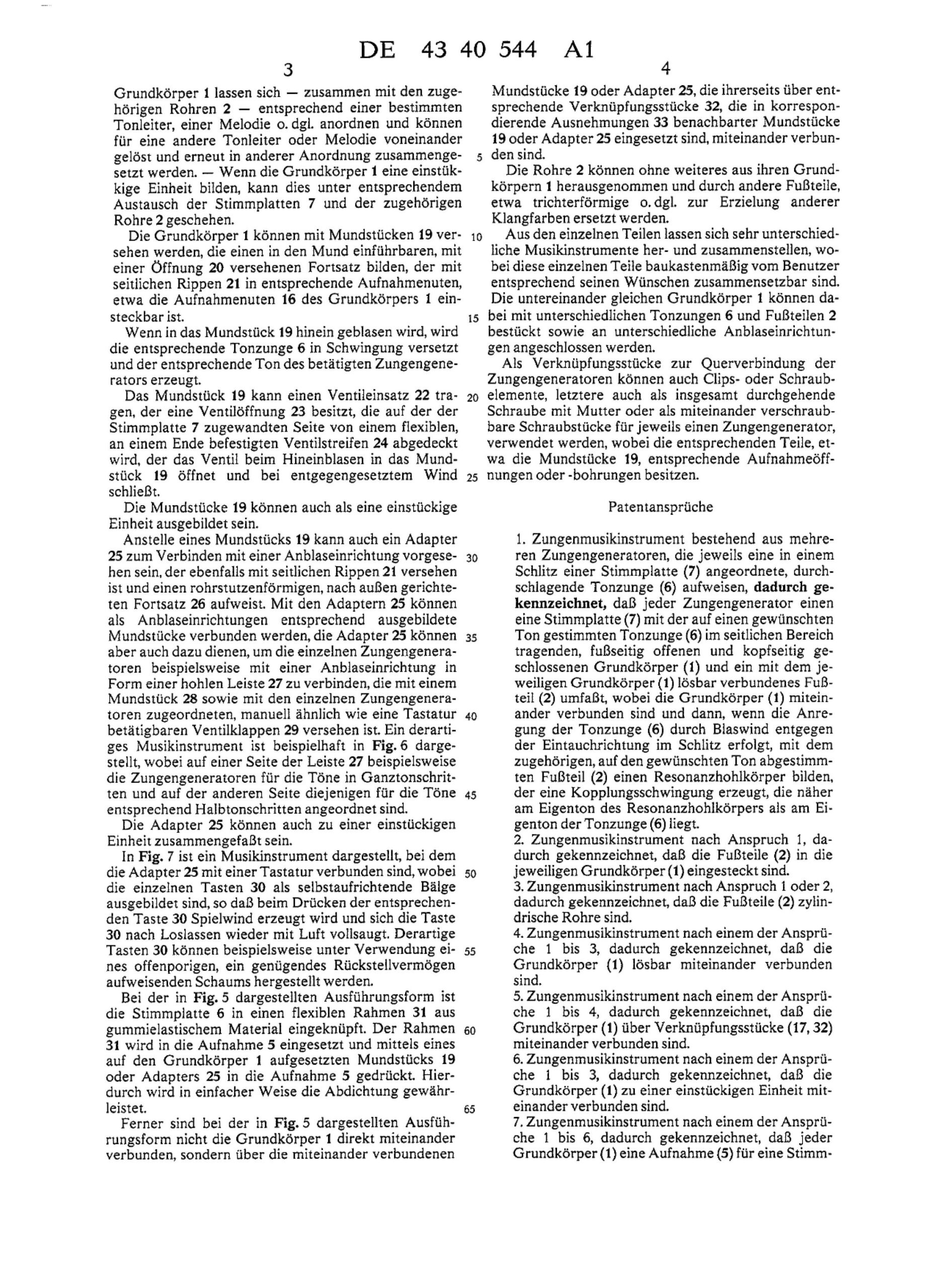
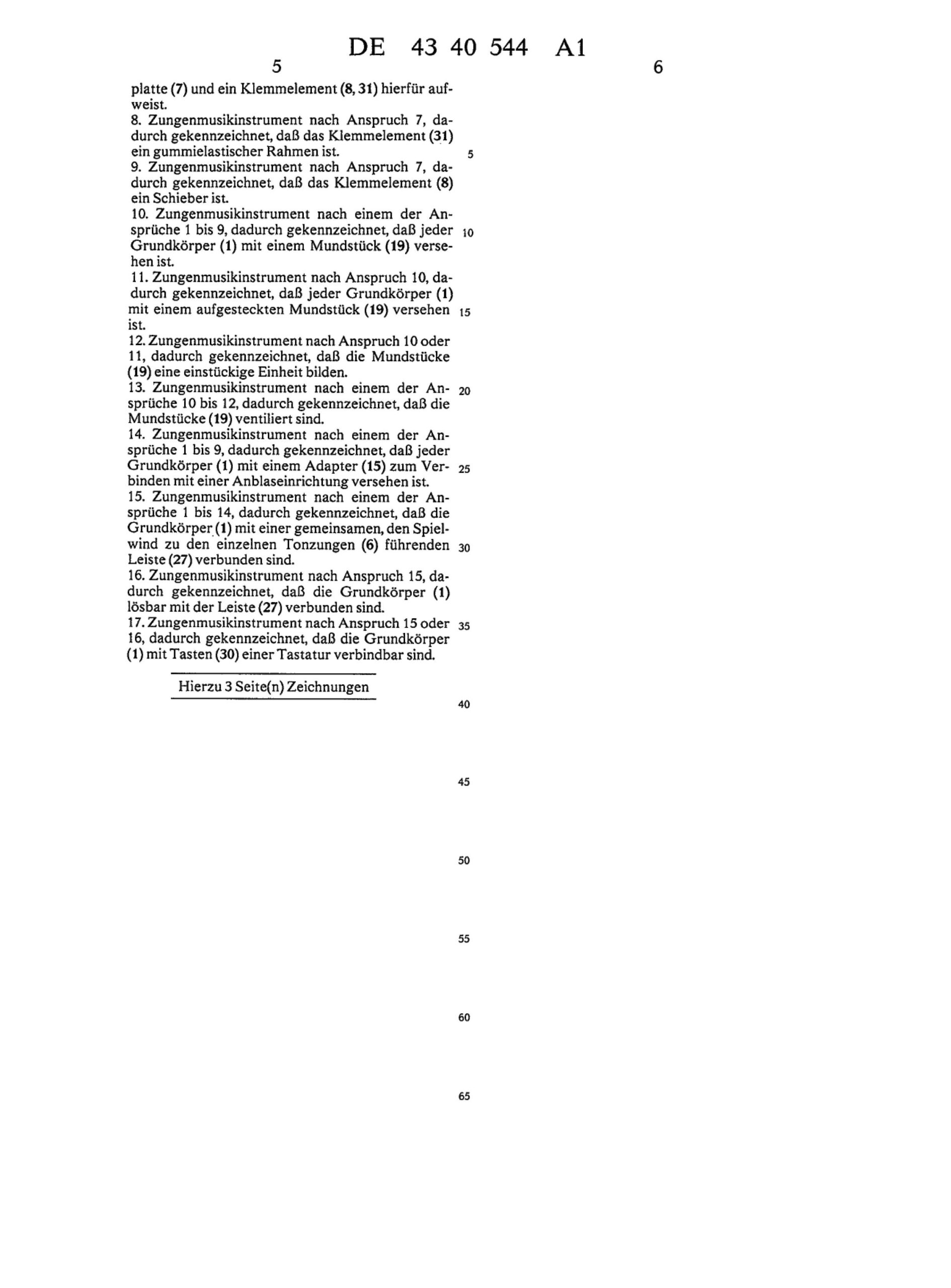
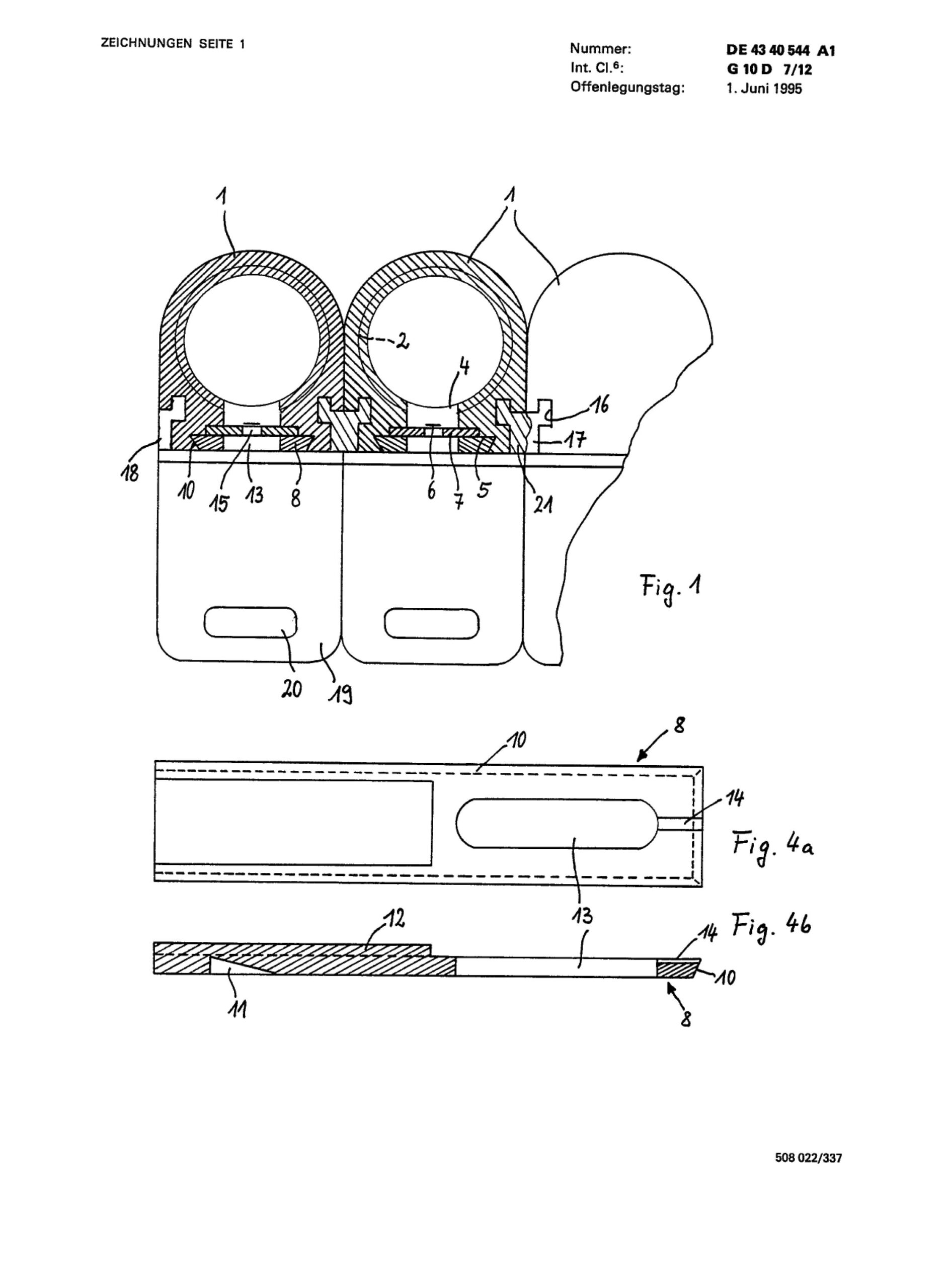
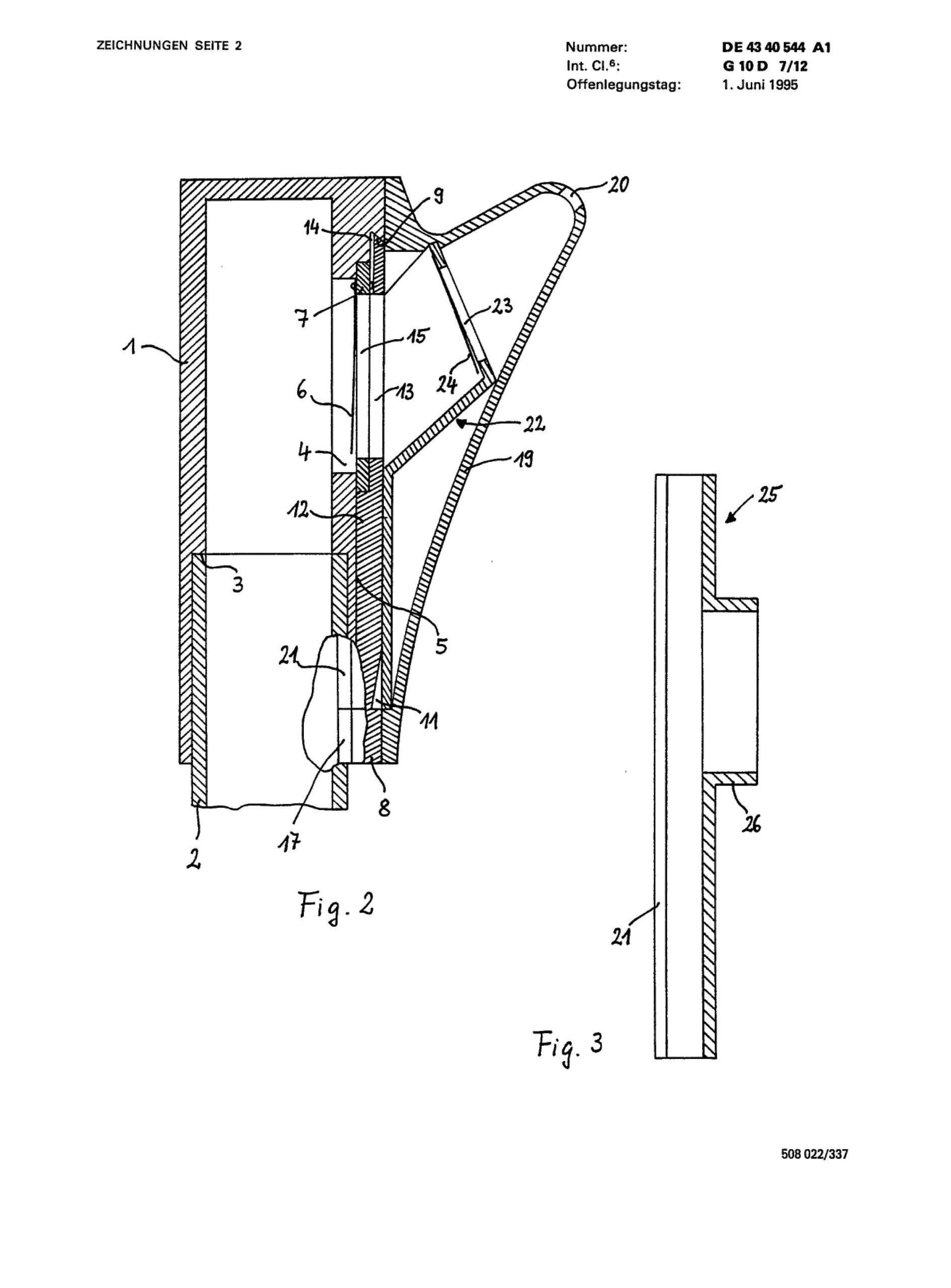
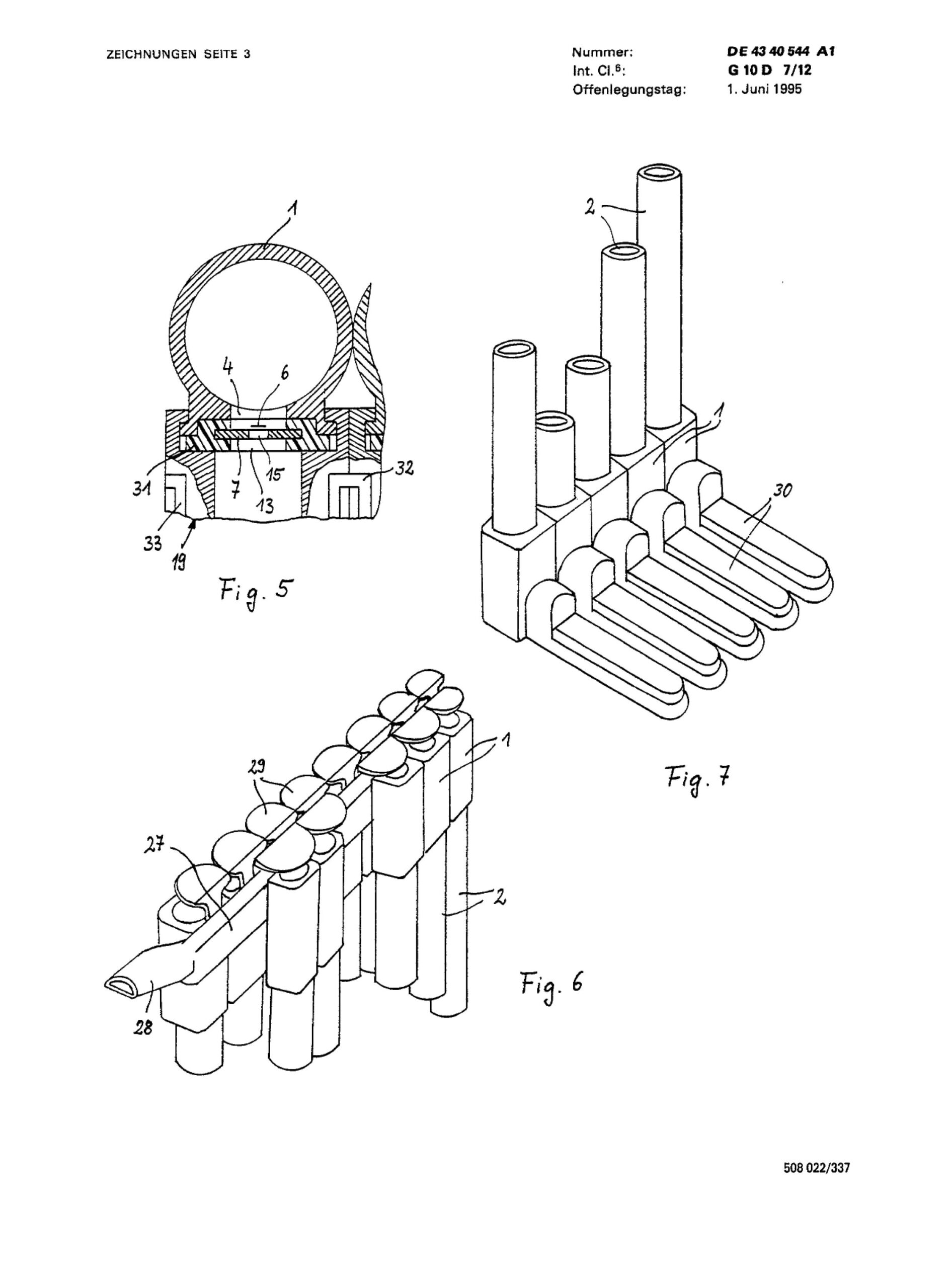 September 20, 2023 at 10:21 am #15033
September 20, 2023 at 10:21 am #15033 DarenKeymaster
DarenKeymasterAfter C Major you could try G major, then D major!
July 11, 2023 at 11:23 am #14959 DarenKeymaster
DarenKeymasterI’ve looked through the whole book – this is all the info on how reed material affects the sound.
Reed Plates
Steel has a loud and powerful sound, silver and nickel plates produce a sweet soft sound.
Reed plates were developed in this order for accordions: iron, brass, zinc, bronze, aluminium. Also, copper, ivory, ebony and other materials have been experimented with. Heavier plates such as brass have a more powerful and sonorous sound than aluminium, but aluminium is better for weight. The heavier the base the better, silver being the best, followed by brass, zinc, aluminium and wood.
Reed Tongues
Reed tongues were made from wood, bronze, brass, nickel silver, and are now made form “special Swedish steels”. Nickel silver and silver produce a soft sweet sound in contrast to steel, but don’t have the same power. Bronze produces a bright sound, but inferior in “intensity” (fullness?) to steel. Brass produces a less bright sound, steel is powerful and stable.
Interesting fact
Early accordion maker Paolo Soprani at some point tried making reeds with canes boiled in vinegar and garlic!
-
AuthorPosts
